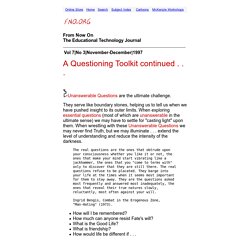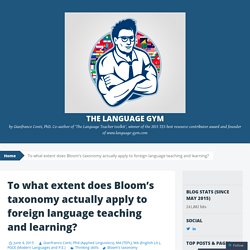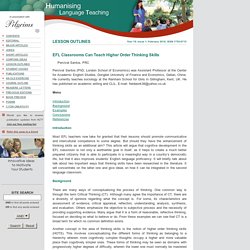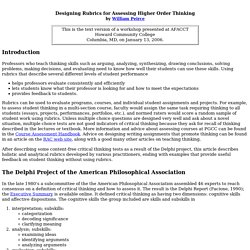

Higher Order Thinking Skills (HOTS) These are the Higher Order Thinking Skills (HOTS) which need teachers to practice them as well while teaching.

Content is the bedrock on which teachers can help students to develop these skills. As students move from Lower Order Thinking skills (LOTS) to HOTS, they start focussing on these very important skills. Some interesting activities that provide focus on these ‘21st century skills’ to my students are: Draw pictures to show a particular event / make a colouring book: This activity is for a very creative mind and a very good technique for students to remember an important event in the text. Make up a puzzle or a game about the topic of study: The sky is the limit for this activity as students can create vocabulary games or quizzes about quotes / characters, points of interest.
‘Gamification’ can enhance and bring out creativity as well as critical thinking skills. Write a biography of any one of the characters: Writing a biography needs an in depth analysis of characters. 1. 2. 3. 4. Learning to Learn. Questioning Toolkit - Part Four. From Now On The Educational Technology Journal Vol 7|No 3|November-December|1997 A Questioning Toolkit continued . . .

Unanswerable Questions are the ultimate challenge. They serve like boundary stones, helping us to tell us when we have pushed insight to its outer limits. When exploring essential questions (most of which are unanswerable in the ultimate sense) we may have to settle for "casting light" upon them. The real questions are the ones that obtrude upon your consciousness whether you like it or not, the ones that make your mind start vibrating like a jackhammer, the ones that you "come to terms with" only to discover that they are still there.
How will I be remembered? Students wrestling with Essential Questions must be prepared for the strong likelihood that their questions may be Unanswerable. Inventive Questions turn our findings inside out and upside down. How do I make sense of these bits and bytes and pieces? Surrounding the king or queen. Where's the beef? To what extent does Bloom’s taxonomy actually apply to foreign language teaching and learning? Bloom’s taxonomy of higher order thinking skills has acquired a mythological status, amongst educators.

It is one of those reference frameworks that teachers adhere to with some sort of blind allegiance and which, in 25 years of teaching, I have never heard anyone question or criticize. Yet, it is far from perfect and, as I intend to argue in this article, there are serious issues undermining its validity, both with its theoretical premises and its practical implementation in MFL curriculum planning and lesson evaluation in school settings.
Why should we be ‘wary’ of the Bloom taxonomy, as the ‘alarmist’ title of this article implies? Mainly because people forget or fail to consider that the Bloom Taxonomy was not meant as an evaluative tool and does not purport to measure ‘effective teaching’. In fact, the book in which the higher order thinking skills taxonomy was published is entitled: Taxonomy of Educational Objectives: The Classification of Educational Goals. AskingRightQuestions. The New Blooms Taxonomy and FL Teaching. Humanising Language Teaching Magazine for teachers and teacher trainers. Percival Santos, PRC Percival Santos (PhD, London School of Economics) was Assistant Professor at the Center for Academic English Studies, Dongbei University of Finance and Economics, Dalian, China.

He currently teaches sociology at the Rainham School for Girls in Gillingham, Kent, UK. He has published on academic writing and CLIL. E-mail: fieldwork38@yahoo.co.uk Menu IntroductionBackgroundExamplesConclusionsReferences Introduction Most EFL teachers now take for granted that their lessons should promote communicative and intercultural competence to some degree.
Background There are many ways of conceptualizing the process of thinking. Another concept in the area of thinking skills is the notion of higher order thinking skills (HOTS). Figure 1: Revised Bloom’s Taxonomy Each level of the RBT is associated with certain cognitive action words (Figure 2): Figure 2: Verbs Associated with RBT Is there any evidence that teaching thinking improves English language learning? Examples Conclusions References. 10 Growth Mindset Statements. 2. ppt lots hots. QEP_Assessment_Plan. Designing Rubrics for Assessing Higher Order Thinking. Designing Rubrics for Assessing Higher Order Thinkingby William Peirce IntroductionProfessors who teach thinking skills such as arguing, analyzing, synthesizing, drawing conclusions, solving problems, making decisions, and evaluating need to know how well their students can use these skills.

Using rubrics that describe several different levels of student performance helps professors evaluate consistently and efficiently lets students know what their professor is looking for and how to meet the expectations provides feedback to students.Rubrics can be used to evaluate programs, courses, and individual student assignments and projects.
For example, to assess student thinking in a multi-section course, faculty would assign the same task requiring thinking to all students (essays, projects, performances, portfolios, etc.) ,and normed raters would score a random sample of student work using rubrics. Holistic Critical Thinking Scoring Rubric Analytical Critical Thinking Scoring Rubrics .